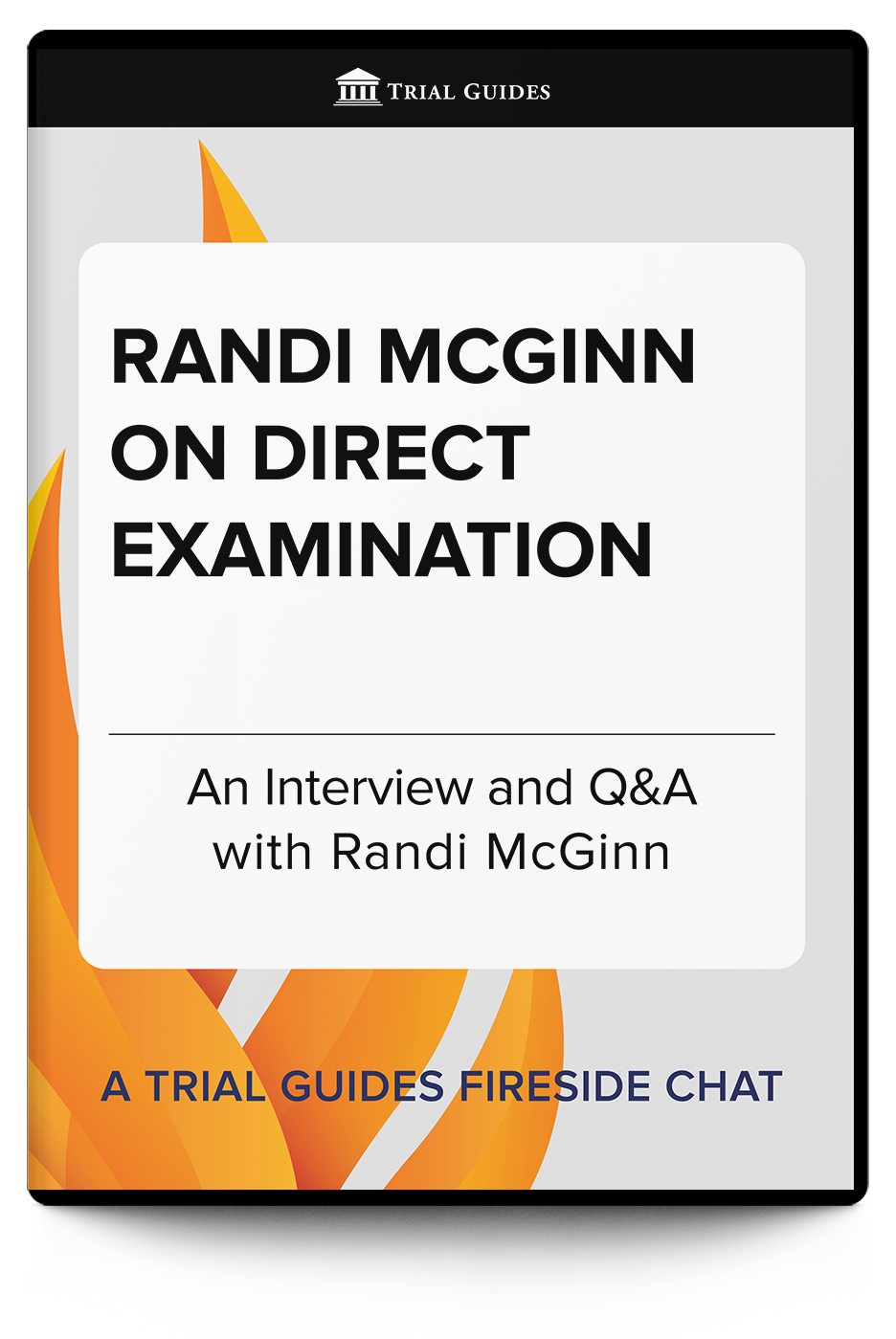Description
Description
Randi McGinn, one of the top trial lawyers in the country, walks listeners through her tried and proven strategies for creating compelling arguments from witness testimony. She discusses how utilizing techniques that appeal to different learning styles can ensure that the jurors will not only understand how serious your client’s injury is, but will remember and callback to specific details during deliberation.
Citing previous successful cases to support these practices, McGinn breaks down the necessary elements for an effective direct examination:
- How to question an expert witness versus the damages witness and plaintiff
- Framing your questions with headlines
- The importance of using an active voice
- The benefits of visual aids
- How to prepare your client for direct examination
- How to piece together the most impactful elements of your client’s story
- How to emphasize progress
In the follow-up Q&A, McGinn answers listeners’ questions on subjects such as:
- How to introduce charts/visuals without objections
- The best way to show soft-tissue injuries
- Creating rules for the jury during direct examination
- Best practices for interviewing your client’s family members and friends
- The best way to deal with your case’s weakness
- Getting the witness to use the demonstrative
- Addressing permanent injury
- How to approach punitive damages during direct
- When to ask the expert their qualifications to render an opinion
- How to use recency in direct
- Preparing for cross-examination
- How to argue for noneconomic damages
- How to deal with passive aggressive testimony
- How to prepare expert witnesses
- Reviewing demonstrative charts with the witness
- How to question a client with memory loss during direct examination
- How to coach your client so they don’t freeze on the stand
- Navigating redirect
McGinn implores you to be creative during direct examination. She offers advice for a range of things you can do, whether it be a change in verbiage or creating a visual during direct examination, that will leave an impression on the judge and jury so your client is awarded the justice they rightfully deserve.
Please Note: Audiobooks are accessed through the “Trial Guides Bookshelf” in your account page. Or through the “Trial Guides App for Lawyers” available from Google Play or the Apple App Store.
Click here for further information on Audiobooks
*This interview was originally offered to customers as part of our Trial Guides LIVE Fireside Chat series. The content has been remastered and edited for brevity and clarity.
Author
Author
Details
Details
Audio Digital Download: 90 minutes; 1st Edition (2021)
Publisher: Trial Guides, LLC




